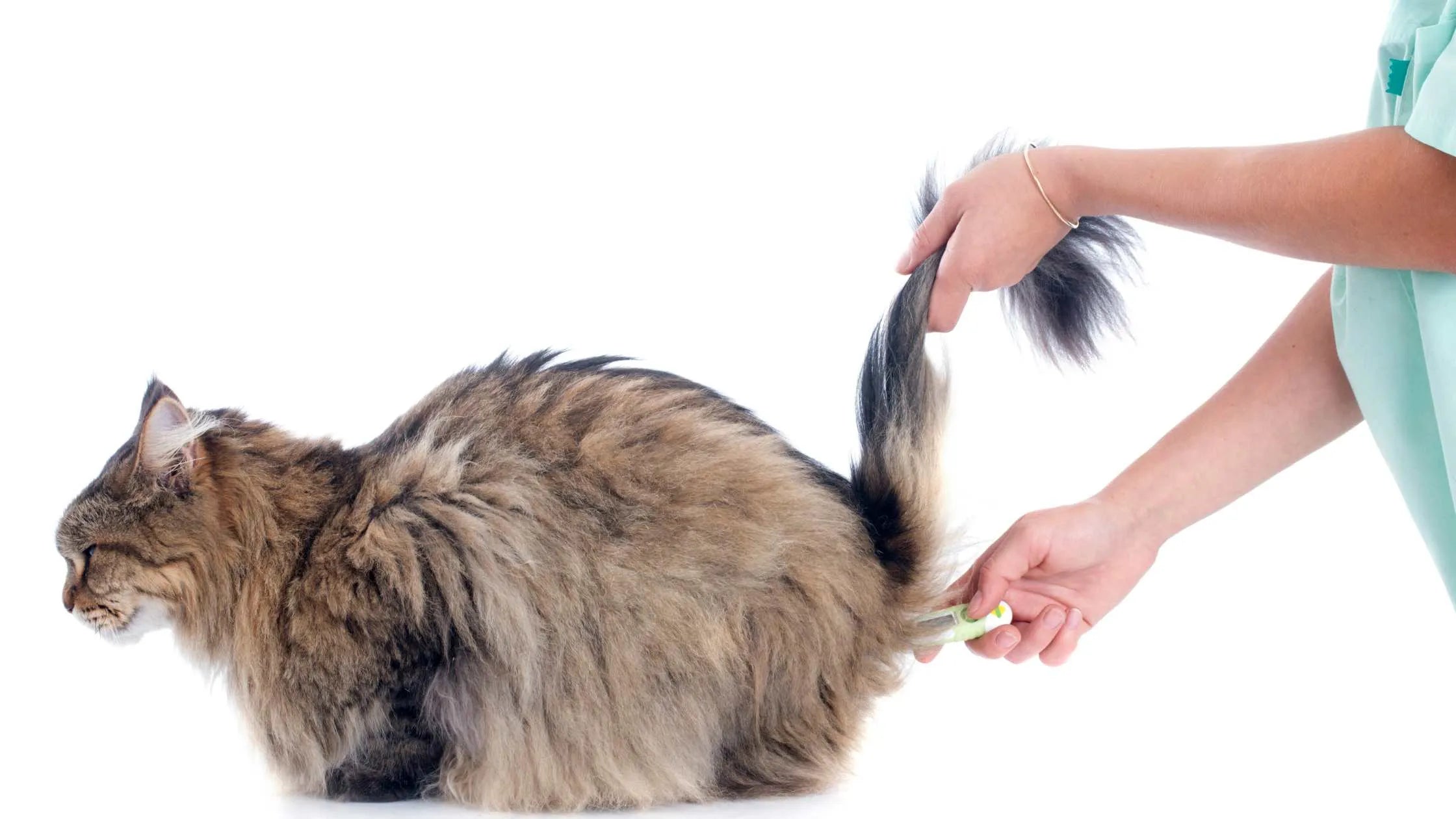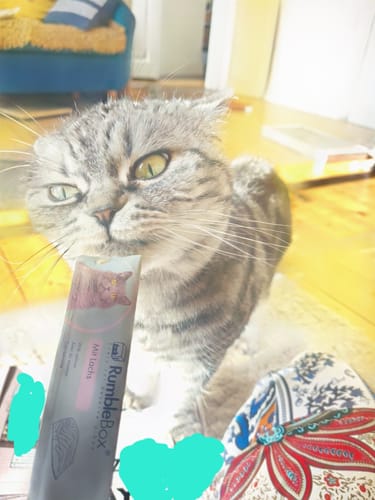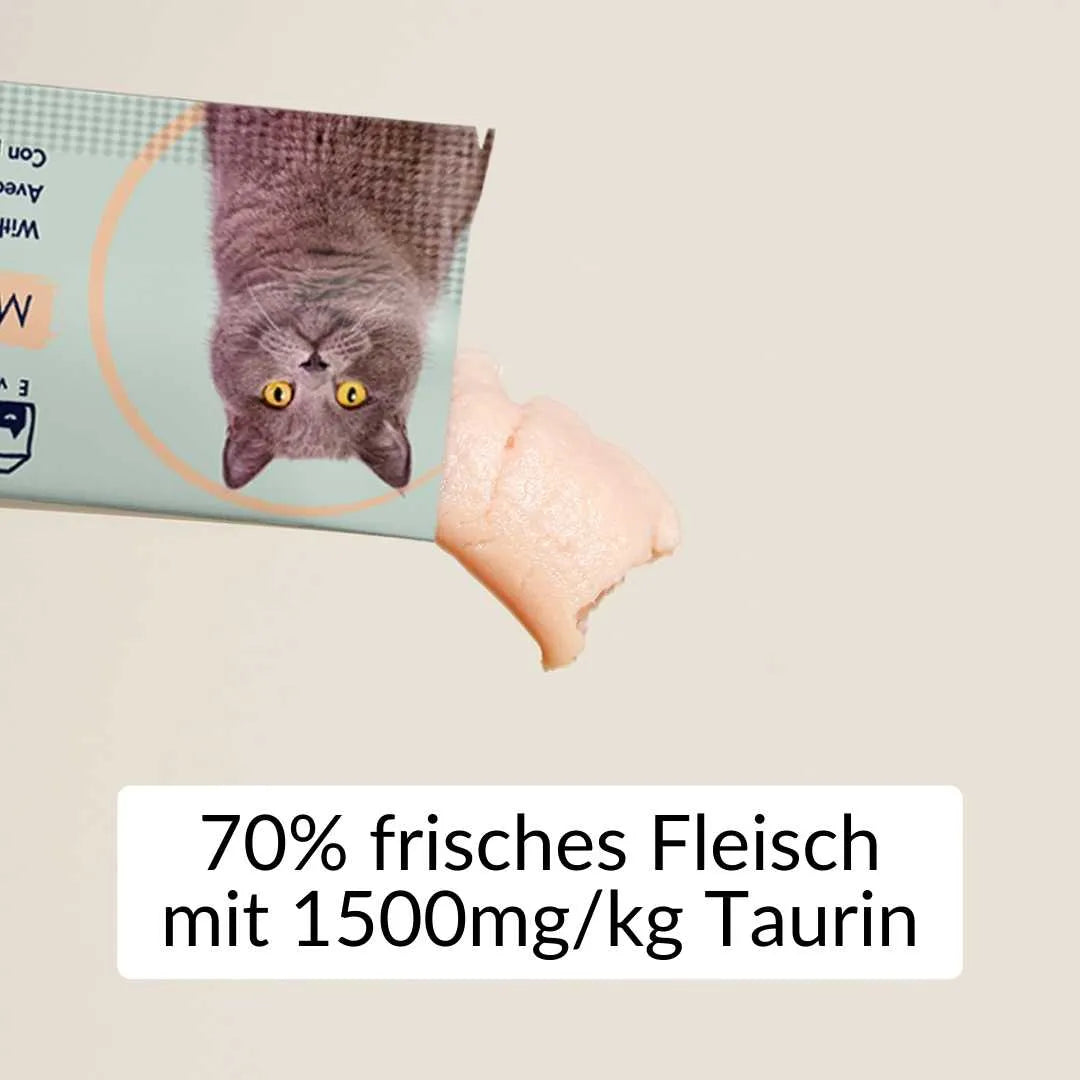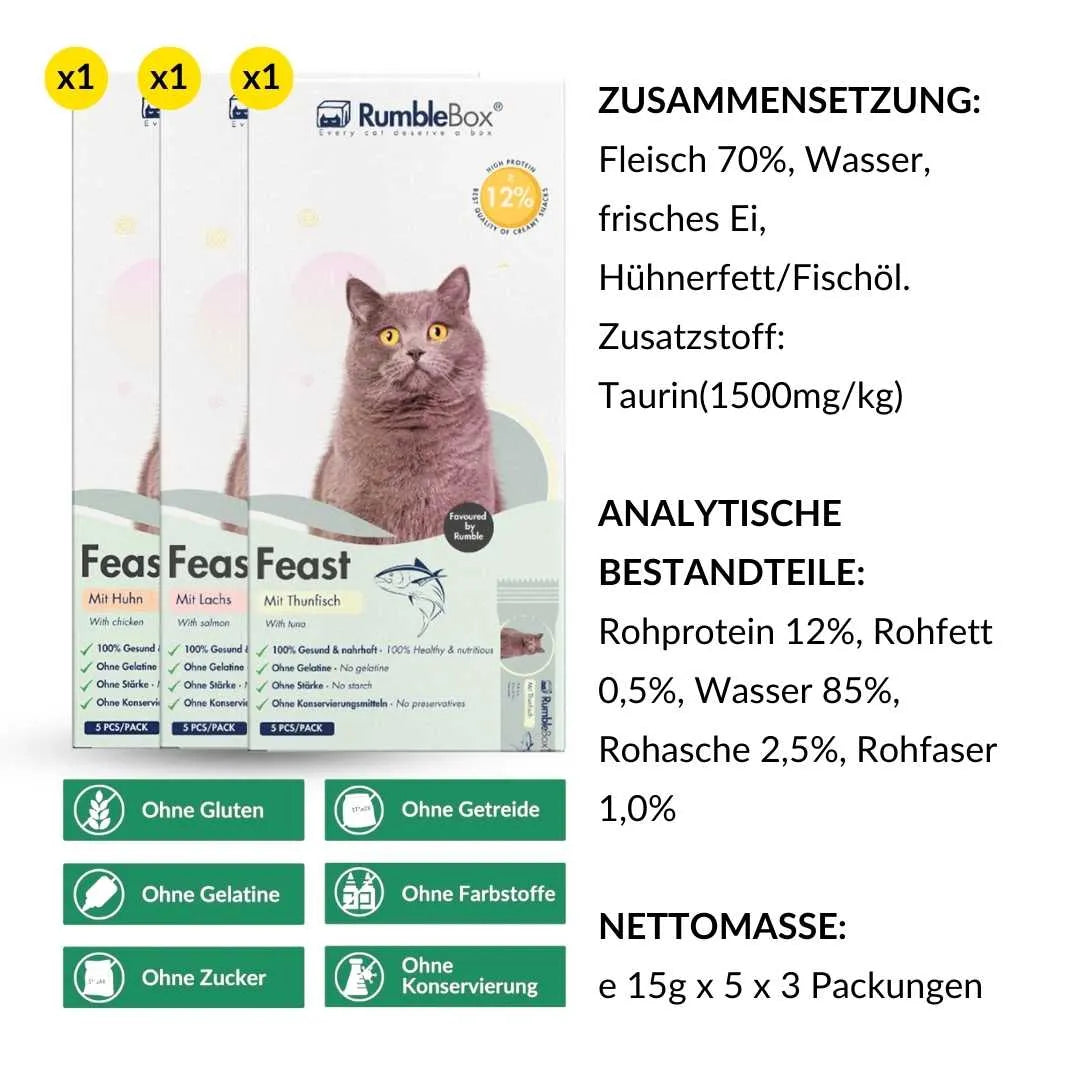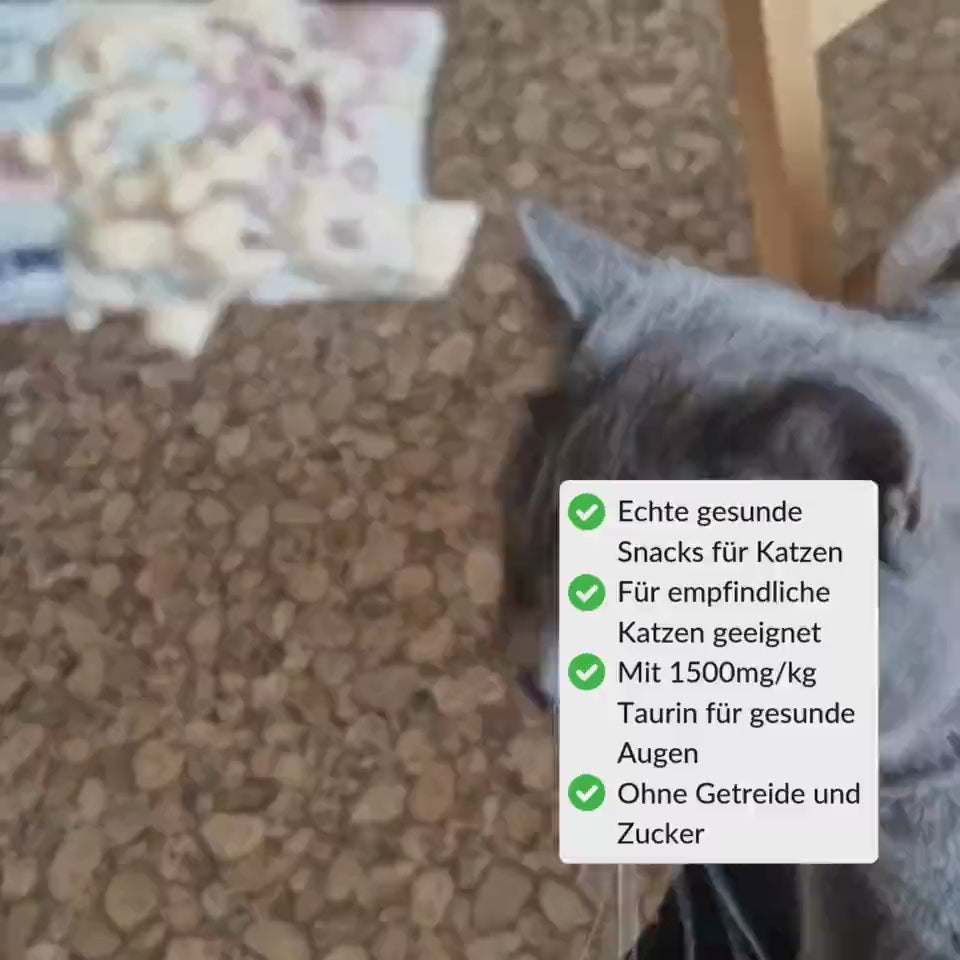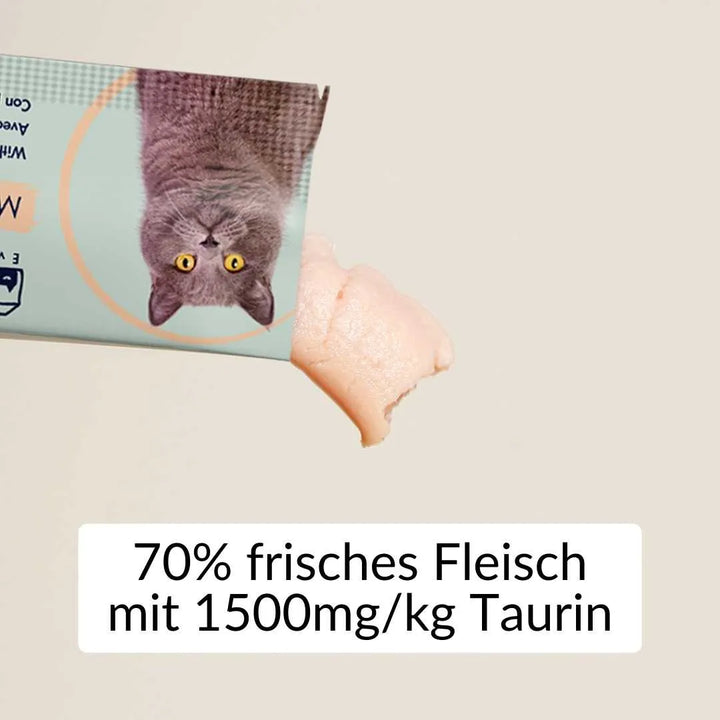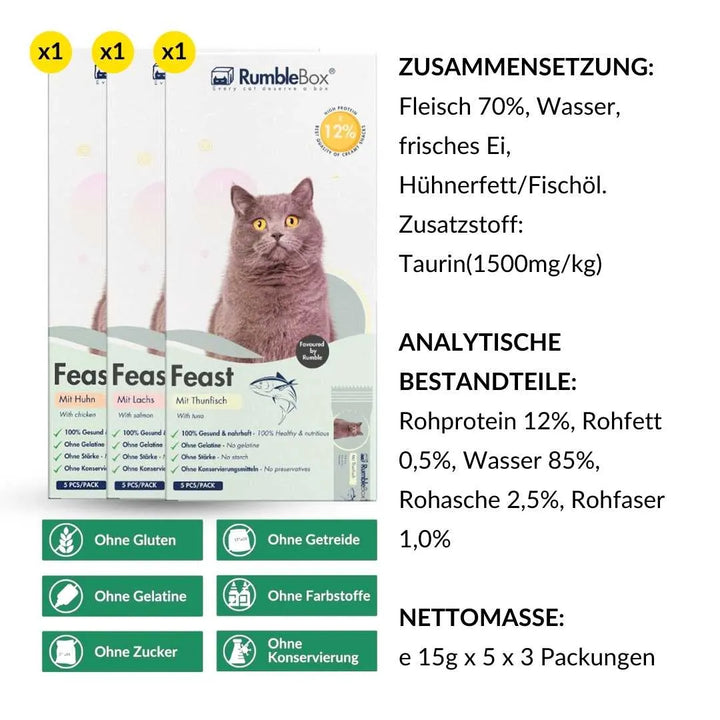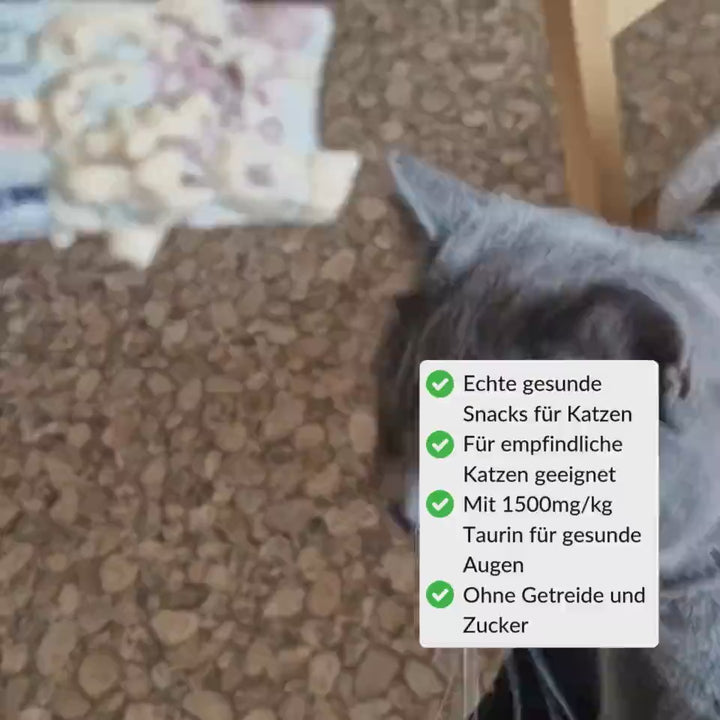Body temperature of a cat: normal values, fever & causes
A cat's body temperature is an important indicator of health. But what is a cat's normal body temperature? When does it say it has a fever or hypothermia? How do you measure temperature correctly, and what are the causes of temperature fluctuations?
In this article, you will learn everything about body temperature in cats, signs of fever, treatment options, and when a visit to the vet is necessary.
Normal body temperature of a cat
The normal body temperature of a healthy cat is between 38 and 39.2 degrees Celsius. Minor fluctuations may occur depending on age, activity level, and ambient temperature.
|
temperature |
Meaning |
|
37.5 – 38.9 °C |
Normal range |
|
39.2 – 39.5 °C |
Slightly increased |
|
From 39.5 °C |
Fever |
|
Over 41.0 °C |
Life-threatening |
|
Below 37.5 °C |
Low temperature – caution |
Temperature fluctuations – what do they depend on?
-
Age: Younger cats often have a slightly higher body temperature than adult cats.
-
Activity: After playing or physical exertion, the temperature may rise briefly.
-
Season: In colder weather, body temperature may drop slightly.
-
Health status: Sick or weakened cats are prone to hypothermia.
How does body temperature change in young and older cats?
A cat's body temperature doesn't always remain constant, but can vary depending on age. Younger and older cats often exhibit different temperature ranges and reaction patterns.
Body temperature in young cats (up to 6 months):
-
Tend to have slightly higher temperatures (up to 39.5 °C is considered normal).
-
The metabolism is faster, which makes it easier to maintain body heat.
-
They are more sensitive to sudden temperature fluctuations.
Body temperature in older cats (from about 8 years):
-
The normal temperature may be slightly lower (37.8–38.8 °C).
-
Older cats often have weaker blood circulation , which causes them to cool down more quickly.
-
Chronic diseases such as kidney problems or arthritis can affect thermoregulation.
If an older cat frequently shivers or has an unusually low body temperature, this could be a sign of a serious illness .
👉 More about signs of aging in cats: Health in old age – Dr. Hölter
Why can a cat's body temperature suddenly fluctuate dramatically?
In some situations, a cat's body temperature can change very quickly. These temperature fluctuations can be caused by various factors.
Reasons for a sudden rise in temperature:
-
Fever caused by infections – e.g. bacterial or viral diseases.
-
Heat stress or overheating – especially in hot weather or direct sunlight.
-
Physical exertion – Intense exercise can cause the temperature to rise above normal for a short time.
Reasons for a sudden drop in temperature:
-
Shock – After injuries or severe blood loss.
-
Hypothermia due to wet fur – particularly dangerous in cold weather.
-
After anesthesia or surgery – The body needs time to regulate its temperature again.
If the temperature rises or falls extremely within a short period of time , the cat should be examined by a veterinarian as soon as possible.
Signs of fever in cats
Since cats often hide illnesses well, you should look out for these signs of fever :
-
Drowsiness and apathy – Your cat seems tired and withdrawn.
-
Loss of appetite – She eats less or not at all.
-
Hot ears, paws or nose – A possible indication of elevated temperature.
-
Dry or warm nose – May indicate fever.
-
Shaking or chills – especially with high fever.
-
Changed behavior – She hides or appears restless.
Tip: Feeling alone isn't a reliable way to determine fever. The most accurate method is taking a temperature reading.
👉 Read more: Fever in cats – symptoms & causes (Dr. Sam).
How do you measure a cat's body temperature?
1. With a digital thermometer (recommended)
Rectal measurement with a digital thermometer provides the most accurate results.
Here's how:
-
Coat the thermometer with Vaseline or lubricant.
-
Calm the cat and carefully restrain it.
-
Carefully insert the thermometer rectally (approx. 1–2 cm into the anus).
-
Read the temperature after a few seconds.
👉 Recommended thermometer: measuring fever in cats .
2. Measuring a cat’s fever without a thermometer – is that possible?
If you don't have a thermometer handy, pay attention to:
-
Hot ears and paws
-
Dry or warm nose
-
Lethargy and loss of appetite
These methods are not reliable. If you are unsure, contact a veterinarian.
Causes of fever in cats
Fever usually occurs as a defensive reaction of the body. The most common causes are:
-
Bacterial infections (e.g. gingivitis, cystitis)
-
Viral infections (e.g. cat flu, FIP)
-
Parasites or fungal diseases
-
Autoimmune diseases
-
Poisoning or allergic reactions
-
Inflammation after injuries or operations
Sometimes the cause remains unclear. In this case, it is referred to as fever of unknown origin (FUO) .
👉 Read more: Cat diseases & fever .
Reduce fever in cats – home remedies & tips
Mild fever can often be treated at home. It's important that the cat drinks plenty of fluids and gets plenty of rest.
This helps:
-
Offer enough water – Fresh water prevents dehydration.
-
Rest and warmth – A calm environment promotes recovery.
-
Moist wraps on the paws – Can help reduce the temperature.
-
Easily digestible food – If she eats, offer her gentle food.
When should you go to the vet?
A visit to the vet is necessary if:
-
Fever above 40 °C occurs.
-
The fever lasts longer than 24–48 hours.
-
Additional symptoms such as vomiting or diarrhea may occur.
-
The cat no longer eats or drinks.
👉 Learn more: Fever in cats – treatment & measures .
How can fever be prevented in cats?
To prevent fever in cats, it's important to strengthen the immune system and prevent illness early. The following measures will help keep your cat healthy:
1. High-quality and balanced diet
-
Protein-rich food strengthens the immune system.
-
Essential fatty acids and vitamins support the body's defenses.
-
Adjust the amount of food – avoid overfeeding or malnutrition.
-
👉 Read more: How much food does your cat need?
2. Adequate fluid intake
-
Always provide fresh water.
-
Moist food or chicken broth helps cats that drink little.
-
Keep water sources clean to avoid germs.
-
👉 More on this:Make your own chicken broth for cats
3. Regular vaccinations & parasite control
-
Vaccinations against cat flu, feline distemper and rabies.
-
Deworming and flea prevention reduce the risk of infection.
-
Regular veterinary visits to detect diseases early.
4. Hygiene & keeping the environment clean
-
Clean the litter box daily to minimize germs.
-
Wash out food and water bowls regularly.
-
Keep sleeping and play areas clean.
5. Detect diseases early
-
Lethargy, loss of appetite or fever are warning signs.
-
Check body temperature regularly (normal value: 38-39.2°C).
-
If you suspect an illness, consult a veterinarian immediately.
Hypothermia in cats – When does it become dangerous?
A body temperature that is too low (below 37.5 °C) can indicate serious problems.
Possible causes:
-
Hypothermia (e.g. after exposure to wetness or cold).
-
Weakness due to illness or injury.
-
Kidney problems or circulatory problems.
If the body temperature drops below 32-36 degrees , it can be life-threatening.
Measures:
-
Warm the cat slowly (blankets, hot water bottle).
-
Go to the vet immediately.
👉 Read more: Hypothermia & kidney disease in cats .
Conclusion: Check your body temperature regularly
The normal body temperature of a cat is between 38 and 39.2 °C .
-
From 39.5 °C it is called fever.
-
Above 41°C can be life-threatening.
-
Below 37.5 °C indicates hypothermia.
Regular temperature checks help to detect health problems early.
Danke, dass du bis hierhin gelesen hast – das bedeutet uns echt viel! Wir hoffen, du konntest was mitnehmen und vielleicht freut sich auch deine Katze schon auf ein kleines Extra. Bis bald und ganz viele Schnurrgrüße!
Übrigens
Viele Katzeneltern achten beim Hauptfutter genau auf die Inhaltsstoffe, vergessen dabei aber oft die Leckerlis.
Dabei stecken gerade in Snacks oft Zucker, Getreide und künstliche Zusätze, die auf Dauer der Gesundheit schaden können.
Wer seine Katze wirklich rundum gesund ernähren will, sollte auch hier auf Natürlichkeit setzen:
Hypoallergene Leckerlis ohne Zusatzstoffe – natürlich von RumbleBox. Perfekt als Belohnung, beim Training oder einfach für zwischendurch.
Über 2,500 Katzen sind schon auf gesunde Snacks umgestiegen!
💚



